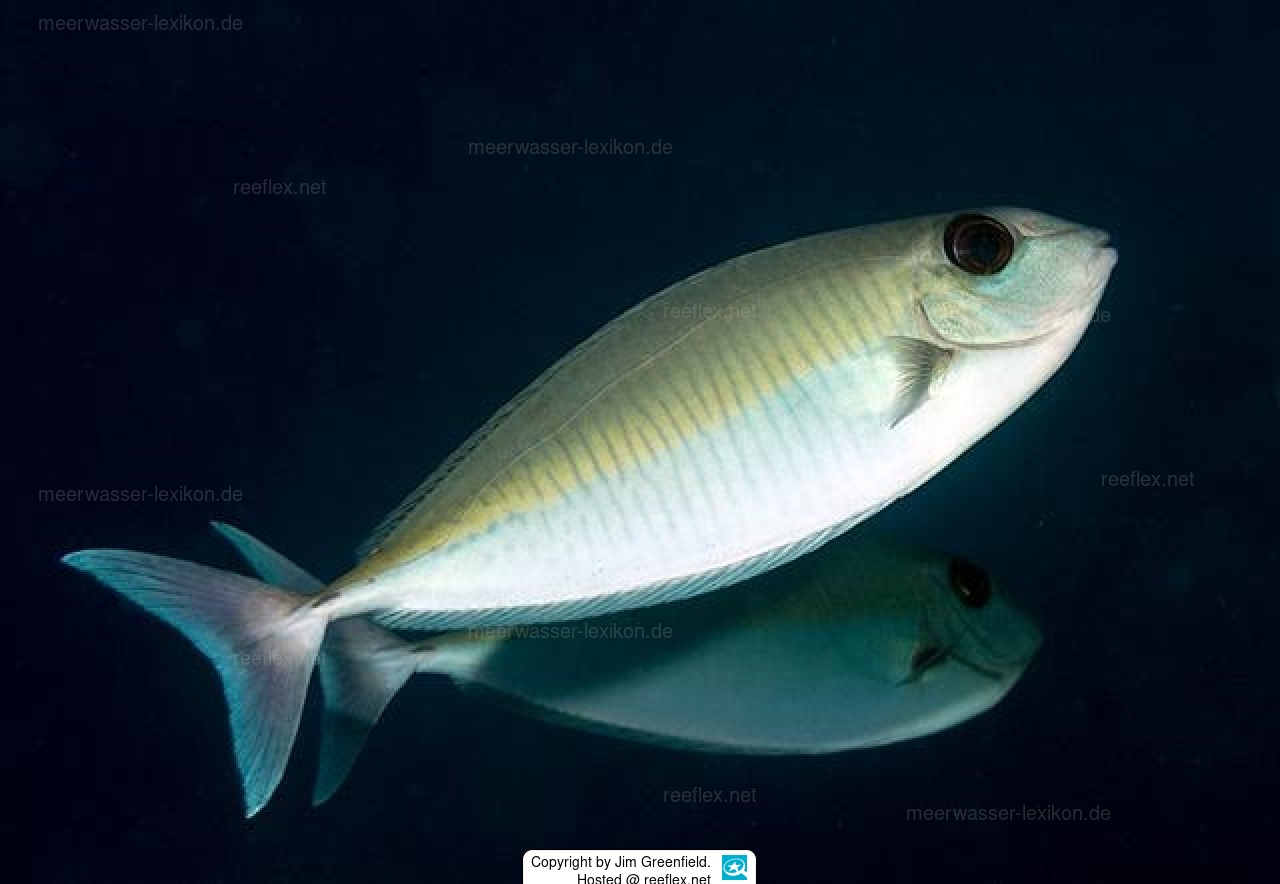Info
The one-knife unicornfish or barred unicornfish is common in the coral reefs of the Indian and Pacific Oceans. With the long shape of its body and its slender appearance it looks more like a fusilier than a typical surgeonfish. The barred unicornfish is a planktivore.
Like many other species of the Naso genera it can change its body colour depending on mood or environment, e.g when sleeping on the reef at night it takes on a disruptive mottled pattern as probably shown in above’s image. During the day the one-knife unicornfish is generally yellowish-green in its mid-torso region.
The Naso species in general grow very fast so the one-knife unicornfish should not be housed in tank below at least 10.000 liters.
The surgeonfishes (Acanthuridae), popular in marine aquaristics, are also called surgeonfishes.
They have horn-like blades in front of the tail root, they use as mainly defensive weapon (defense) against predators, but this sharp weapon is also used in fights among themselves.
Deep cuts in the body of opponents can cause permanent injuries, but often death occurs immediately.
If surgeonfishes are to be kept in pairs in an aquarium, fights between the fishes can be the order of the day, we could observe this several times with the very popular Hawaiian surgeonfish (Zebrasoma flavescens).
The scalpel-like blades can cause deep cuts, this is also true for the careless aquarist who wants to touch or catch the fish with unprotected hands.
Another problem can occur if one wants to catch surgeonfish with a landing net and transfer them after catching, the horn blade can easily get caught in the net.
Caution: Careless handling of the animal can cause deep cuts!
Like many other species of the Naso genera it can change its body colour depending on mood or environment, e.g when sleeping on the reef at night it takes on a disruptive mottled pattern as probably shown in above’s image. During the day the one-knife unicornfish is generally yellowish-green in its mid-torso region.
The Naso species in general grow very fast so the one-knife unicornfish should not be housed in tank below at least 10.000 liters.
The surgeonfishes (Acanthuridae), popular in marine aquaristics, are also called surgeonfishes.
They have horn-like blades in front of the tail root, they use as mainly defensive weapon (defense) against predators, but this sharp weapon is also used in fights among themselves.
Deep cuts in the body of opponents can cause permanent injuries, but often death occurs immediately.
If surgeonfishes are to be kept in pairs in an aquarium, fights between the fishes can be the order of the day, we could observe this several times with the very popular Hawaiian surgeonfish (Zebrasoma flavescens).
The scalpel-like blades can cause deep cuts, this is also true for the careless aquarist who wants to touch or catch the fish with unprotected hands.
Another problem can occur if one wants to catch surgeonfish with a landing net and transfer them after catching, the horn blade can easily get caught in the net.
Caution: Careless handling of the animal can cause deep cuts!







 Jim Greenfield, Großbritannien
Jim Greenfield, Großbritannien



















